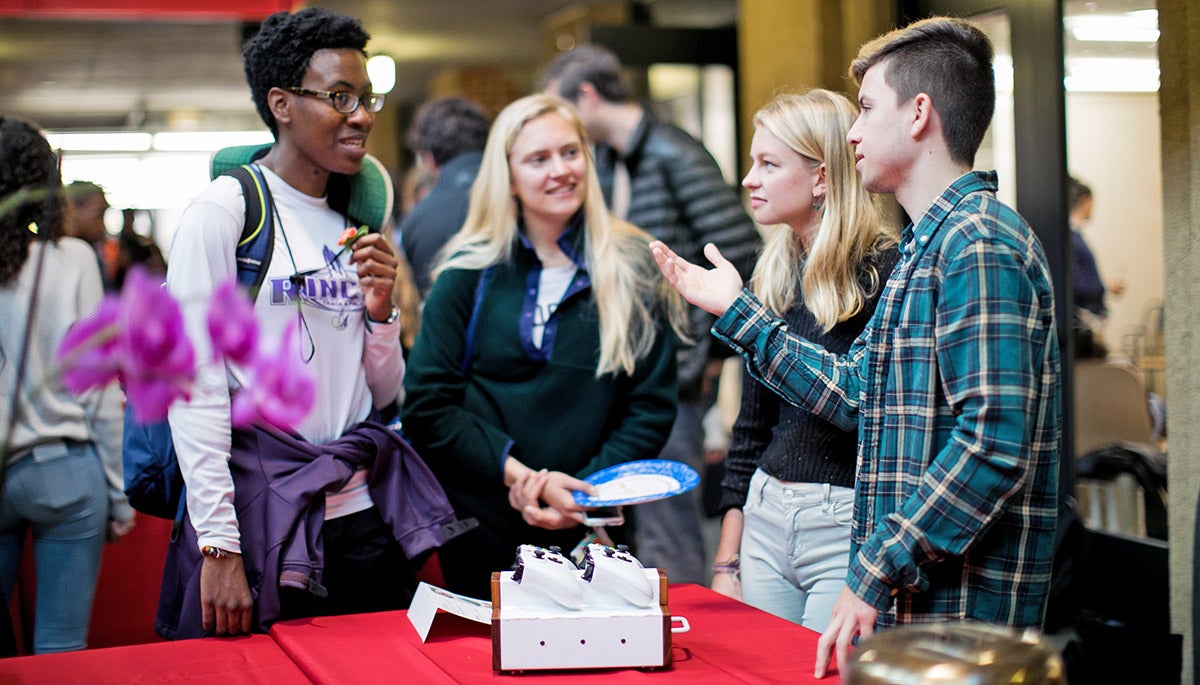Technology & Inventions

Technology Licensing
The Office of Technology Licensing (OTL) promotes the transfer of Stanford technology for society’s use and benefit while generating income to support research and education. In fiscal year 2023, Stanford received $59 million in licensing revenue from 1,059 technologies. OTL evaluated 568 new invention disclosures and signed 113 new licenses/options. Twenty-six of the 113 agreements were with Stanford startups. The Industrial Contracts Office (ICO) is the group within OTL that specializes in research agreements with industry. ICO finalized a total of 2,110 industry research agreements, of which 586 were new industry sponsored research agreements, resulting in more than $67.7 million research funding received.
Notable Inventions Licensed by OTL:
1970s
- Recombinant DNA: This ubiquitous tool for molecular biology was developed in 1973 by Stanley Cohen and Herbert Boyer to enable scientists to perform genetic engineering by combining pieces of DNA from different organisms.
- Digital music: John Chowning developed FM sound synthesis for digitally generating sounds in the late 1960s, leading to the music synthesizer.
1980s
- Antibody therapies: In the 1980s, Leonard Herzenberg, Vernon Oi and Sherie Morrison invented a technique for producing functional antibodies, enabling treatments for such conditions as autoimmune diseases and cancer.
1990s
- Google: The world’s most popular search engine got its start as Sergey Brin and Larry Page developed the page-rank algorithm while graduate students.
- 293T cell line: Michele Calos and her team developed a human 293T cell line commonly used in the biotech/pharma industry for transfection, recombinant adeno-associated virus (AAV) protein expression, DNA replication or retroviral vector production. The cell line efficiently produces vectors that are utilized for gene and cell therapy.
2000s
- Data analytics: Visualization software created in the laboratory of Patrick Hanrahan helps researchers working with large amounts of data to quickly analyze, visualize and share information.
- Artificial facet joint: This licensed technology was further developed into the first and only FDA approved, minimally invasive, indirect decompression device to treat lumbar spinal stenosis (LSS).
2010s
- CoreNLP: Christopher Manning and his lab developed a set of natural language analysis tools for any application requiring human language technology or natural language processing (NLP) tools necessary to manage human language text.
2020s
- Biological software: In 2020, Drs. Maria Barna and Rhiju Das developed technologies around rational design and methods of synthesis for mRNA therapeutics and vaccines, to help build an AI platform for design and development of unique mRNA compounds.
Innovation
Stanford alumni and faculty have created more than 39,900 companies since the 1930s. Frederick Terman, provost from 1955 to 1965, is called the “academic architect” of the high- technology region known as Silicon Valley.
Stanford alumni have founded, built or led thousands of businesses, including some of the world’s most recognized companies—Cisco, Gap, Google, Hewlett-Packard, Nike, IDEO, Instagram, LinkedIn, Netflix and Robert Mondavi Winery. In the area of social innovation, the Stanford community has created thousands of nonprofit organizations over the decades, including such well-known organizations as Acumen Fund, Kiva and the Special Olympics.
Notable Dates in Computing
| 1953 | High-speed electronic calculator installed on campus |
| 1956 | First computer installed |
| 1957 | First faculty member specializing in computers hired |
| 1965 | Computer Science Department founded |
| 1968 | Computer mouse, hypertext linking debuted at Stanford |
| 1987 | First residential computing program established at Stanford |
| 1988 | Stanford’s network is one of the first to connect to the Internet |
| 1991 | SLAC creates the first U.S. website |
| 2011 | Three Stanford classes are offered openly on the internet and completed by 60,000+ students, jumpstarting the online learning movement |
| 2013 | Stanford engineers build computer using carbon nanotubes |
| 2018 | Center for Blockchain Research launched |
| 2019 | Institute for Human-Centered AI (HAI) founded |
| 2019 | Stanford Data Science (SDS) founded |